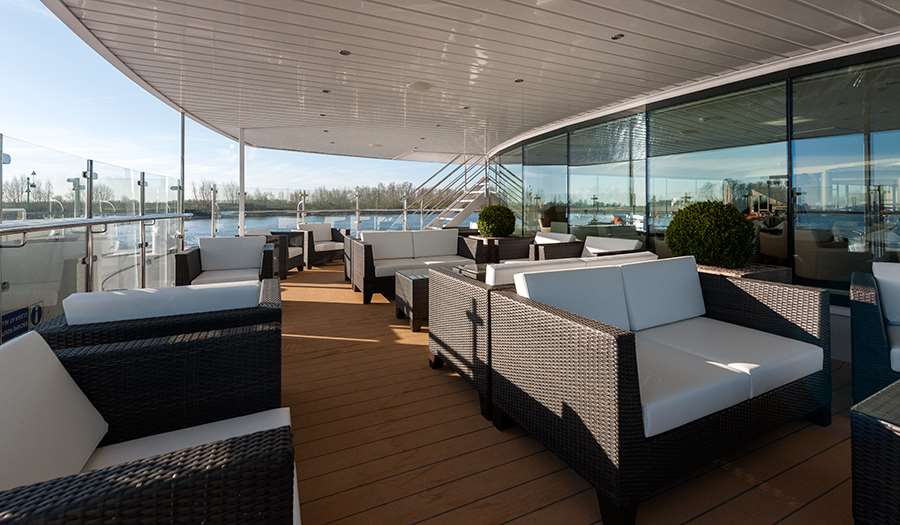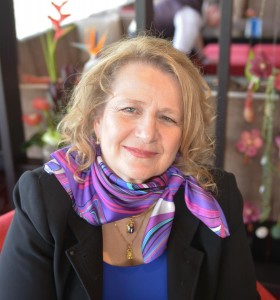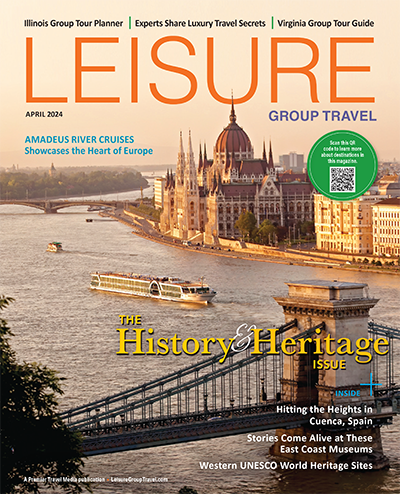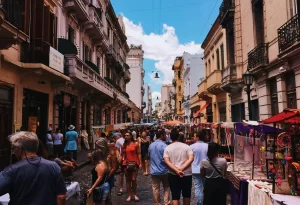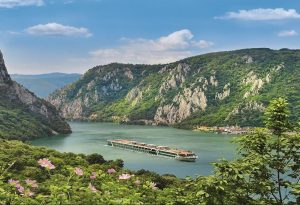In an interview conducted on the inaugural cruise of the Avalon Impression, Leisure Group Travel publisher Jeff Gayduk talks with J. Mara DelliPriscoli, president of Travel Learning Connections, about the state of educational travel
Leisure Group Travel: What was your reaction when you were asked to be the godmother of the Avalon Impression?
Mara DelliPriscoli: I was speechless for a moment and indeed very honored. The river cruise market has always been big for the affinity market. It’s been historically a great seller and the rivers of Europe have always been a mainstay for the educational travel community.
LGT: Not only are you the godmother of this ship, but some would call you the godmother of the educational travel market. As leaders of industries do, give me a state of the sector of your business.
Mara: The affinity market is experiencing resurging growth. Planners and operators are very busy with their programs and they’re hiring. In our annual State of the Industry report colleagues noted that customizing tours to provide unique cultural experiences was one of the top trends as well as broadening the geographical range of cruise offerings. Offering shorter trips with optional extensions and focusing on smaller group sizes as well as more independent options were also trending. Tours providing a strong educational component within specialized themes like art, culture or soft adventure continue to be strong.
We are seeing an increase in active travel being integrated with more traditional art and cultural programming. Domestic travel is also strong. The other big trend is intergenerational travel. It’s not just immediate family; it could be uncles, nieces, grandparents with sons, daughters and grandchildren. You have to redefine what family travel means.
LGT: Does this bring a new type of tour operator into the fold?
Mara: We’ve had specialist family and active tour operators in the fold, so to speak, but they weren’t getting any traction early on. Now they are. I am also seeing a lot of bike tours, walking tours, culinary tours getting picked up in catalogs.
LGT: How has this translated to your Educational Travel Conference?
Mara: We’ve successfully grown the ETC conference large enough to allow for diversification in products and destination representation but still intimate enough to allow for networking and small group exchanges. We’re growing the online community across the globe and that’s getting significant traction.
LGT: Is your conference still focusing mainly on alumni?
Mara: Alumni have always been strongly represented at ETC. We certainly have accommodated many other nonprofit travel planners during our 29 years. There are zoos, conservation and cultural organizations, plus other non-profits that are associated with educational travel. Alumni travel marketing is definitely evolving. Whereas once it was just the affinity connection that could sell out travel programs, current offerings have to appeal to evolving interests and differing travel demands of millennial to boomer affinity travelers – while continuing to provide exceptional leadership and innovative programming.
LGT: Having been to your conference before, there’s an overwhelming presence of international destinations and tour operators with product to very exotic destinations. How can a domestic destination play in this marketplace?
Mara: We’re seeing a transition in this conference where travel planners are actively seeking destination knowledge both domestic as well as international. On the domestic front, travel planners are often looking for customization and behind-the-scenes access – they don’t need to be sold on a specific city. They are seeking specialty experiences with specialized venues such as customized culinary programs, biking tours, specialized cultural programs, unique family tours, national parks, and specialty train experiences.
LGT: What’s the biggest separator between this sector and the traditional group market?
Mara: There’s a unique qualifier for the nonprofit affinity market. Travel programs are designed to serve the greater mission of the sponsoring institution as well as to deepen the engagement with alumni/members. A great deal of operational flexibility and programming customization is required of operators serving this niche.
LGT: What’s the launch pad for suppliers becoming comfortable and building business within ETC?
Mara: My colleagues would say it takes about three years to significantly break into this market. In that process you need to be visible, you’ve got to network and not just stand behind a display table. So newbies are advised to really get involved in the conference program and community to get their name out there. Success in breaking in is not selling your product but your knowledge – and building long-term relationships. I saw a lot of newcomers this year and they were thrilled with the reception.
LGT: How does the community of ETC work?
Mara: The membership is one year and it gives you access to all online resources such as searches, research reports and conference session recordings. We do a number of educational sessions around the world where we share information about product development, guides and research. You get these resources along with the opportunity to network internally by joining as a member.
LGT: What about the regional roundtables?
Mara: Regional roundtables are open to anyone. Starting in the early ’90s we held a roundtable on both the East and West coasts. Now we have expanded across the US and Canada with six to seven roundtables annually. They feature time for collegial discussions, updates on ETC happenings, addressing industry issues and social hours.
LGT: There’s the phrase “if it walks like a duck and it quacks like a duck, it’s a duck.” You talk like an association, you act like an association, but you’re really not an association. Why is that?
Mara: From ETC’s inception I envisioned the concept of facilitating a community – a collaborative camaraderie of like-minded individuals sharing best practices, issues and expertise as well as furthering the development of nonprofit and for profit partnerships in the field of travel. As such ETC has developed very much as a powerful grass roots network with colleagues taking ownership of voluntary roles such as program leadership and online content curating – only a few of the ways individuals are deeply involved in this “community.” Membership is on an individual basis, not based on corporate affiliation. Many retired colleagues enthusiastically elect to stay active in the community in terms of mentoring and sharing expertise on an ongoing basis both virtually and at the ETC conference.
LGT: They say every organization has a life cycle. What stage is the nonprofit travel industry right now?
Mara: The affinity market has a lot of new energy, professionals and diverse organizations influencing future growth, and a lot is changing in terms of how institutions are managing and resourcing their travel programs. One big shift is that many alumni programs have now been moved under the development umbrella of their respective institutions.
It is an exciting time with new opportunity and challenge. If the case can effectively be made – both qualitatively and quantitatively – that travel is the ultimate alumni/member engagement tool, nonprofit travel programs will be one key driver in future strategic outreach and engagement initiatives. This sets the stage for the next phase of growth for affinity travel. If travel programs are viewed as a sidebar to essential program offerings, with limited resources provided and sustainability directly contingent on the income generated by each tour, growth and maturation may take a decidedly different direction.
LGT: Is that a positive move for the industry?
Mara: I have always held to the belief that travel is the ultimate engagement tool. As such nonprofit travel programs will continue to require sophistication and customization in terms of design and delivery – as well as sustained institutional support for travel program and leadership development – in order to truly thrive and deliver on their full potential.
I can’t give the crystal ball outlook, but I know that travelers will increasingly seek connections that touch their hearts while pursuing their interests. If nonprofit institutions and organizations facilitate meaningful connections through relevant travel programs, the outcome for sponsoring institutions will be significant in terms of impassioning member/alumni commitment to their affinity institution –and ideally long-term giving.


